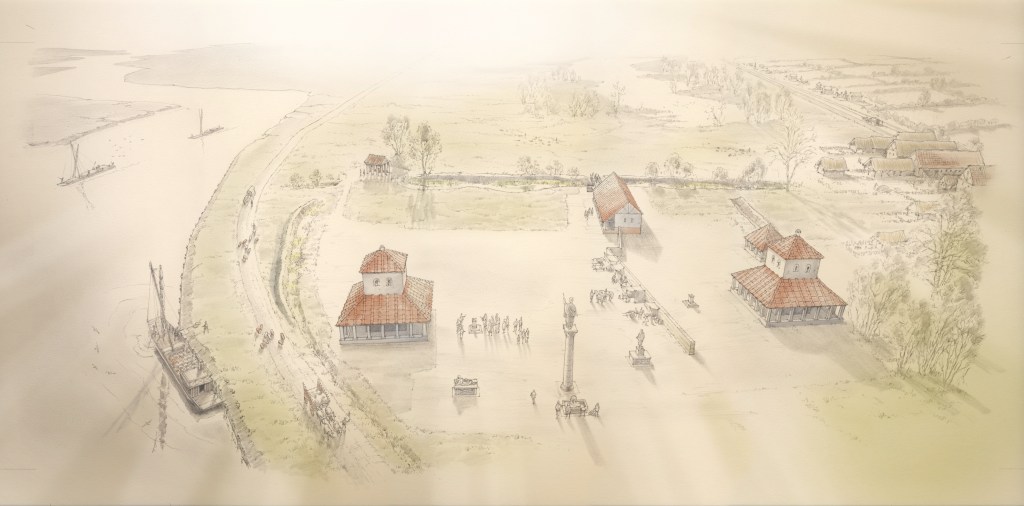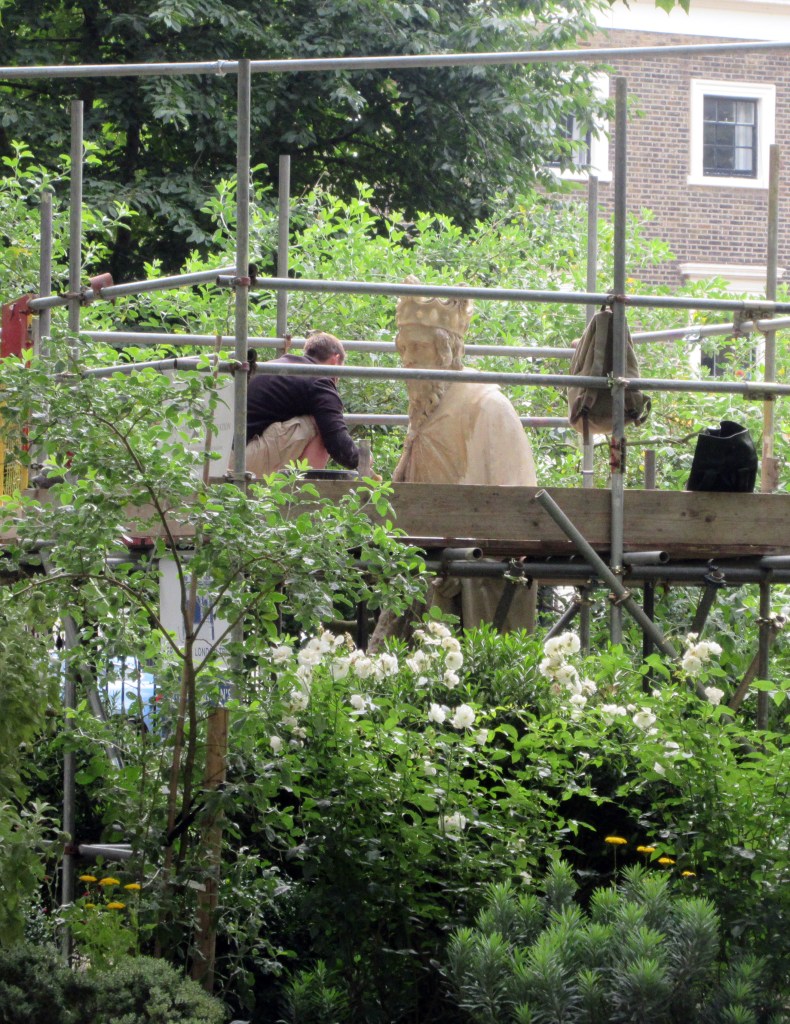Recent conservation work on the statue of King Alfred in Trinity Church Square has revealed fascinating results, of immense importance to the archaeology of Southwark.
The restoration project, funded by Heritage of London Trust and Trinity House, was undertaken by our stone expert, renowned geologist and geoarchaeologist Dr Kevin Hayward, together with Professor Martin Henig and London Stone Conservation. They have discovered that the lower part of the statue dates to the late first or early second century; it was previously thought to be medieval or later.
It is now believed that the upper part of the statue was designed to fit on the base of a colossal Roman bath stone sculpture, almost certainly of the goddess Minerva.

The base is made from a South Cotswold limestone (Bath stone) of a type that is used in about 90% of all sculpture in Roman London made from native stone. It belonged to a temple complex. It is very well carved showing muscle definition, probably by a continental craftsmen used to working native British stone. Carvings of this quality are typical of early to mid-second century. I think it is the largest piece of statuary in native stone in the province.’
Dr Kevin Hayward

‘It is a most extraordinary find … it is part of a cult statue of a goddess from a major temple area by Roman Watling Street, part of which was excavated at nearby Tabard Square. We think that this came from one of the largest temples on the site.
Professor Martin Henig
.
Professor Henig believes lower section was created between 80AD and 130AD and is a ‘fascinating case of re-use’. He adds ‘It is extraordinary. I know no other instance of a piece of Romano-British statuary being used in creating what is a pastiche Late Medieval style statue. I imagine when it was found it was thought to be Medieval and was employed to give the King Alfred statue authenticity’. Professor Henig compares the statue to the headless statue of Minerva found in Cambridgeshire ‘the folds are so alike. These classical statues followed very precise lines. Minerva would be by far the most likely goddess… She was widely venerated in Roman Britain’. The Southwark statue is twice the size of that found in Cambridgeshire. ‘A whopping big statue,’ Professor Henig said. Dr Hayward agreed, noting that the size of the stone leg seems disproportionately large for a statue the size of Alfred.
Tabard Square lies just to the north of Trinity Church Square. We excavated a major temple complex in 2002, with a large gravelled precinct, two Romano-Celtic temples, and numerous plinths, altars and columns. Our dating for the foundation of the Tabard complex is 120AD-160AD, at the end of Professor Henig’s date range; but the statue may already have been reused or have come from areas beyond those excavated.
Dr Chris Constable, Southwark’s borough archaeologist, said: ‘It’s really exciting to find out that there’s been a piece of Roman sculpture on display in London since at least 1831, the first evidence we have for King Alfred standing in Trinity Church Square. There have been an enormous number of theories about it. It’s always been mentioned quite vaguely as the oldest statue in London-and now it probably is. At least part of it is 1,000 years older than we thought.’


A white marble plaque found at the site, seen here in situ, demonstrates that Southwark was considered part of Roman London; it is the earliest inscription with the word ‘Londinium’ and is dedicated to the god Mars Camulos.
.
One of two tin-alloy canisters found contained a greasy preparation, probably used for lightening the complexion, amazingly still bearing the finger marks of its last user.
.
Our monograph ‘Temples and Suburbs’ by Douglas Killock, which details our excavations at this extraordinary site, was winner of the 2016 London Archaeological Prize, and is available to purchase here.





